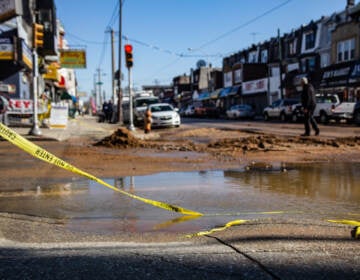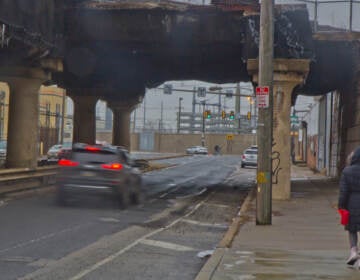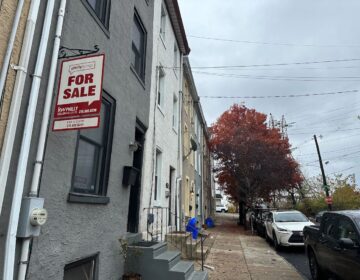Nearly 7 years after promised repairs, neighborhood patience wears thin over crumbling railroad viaduct
The city’s Law Department is weighing its options on speeding up repairs, but a City Council member wants action sooner.
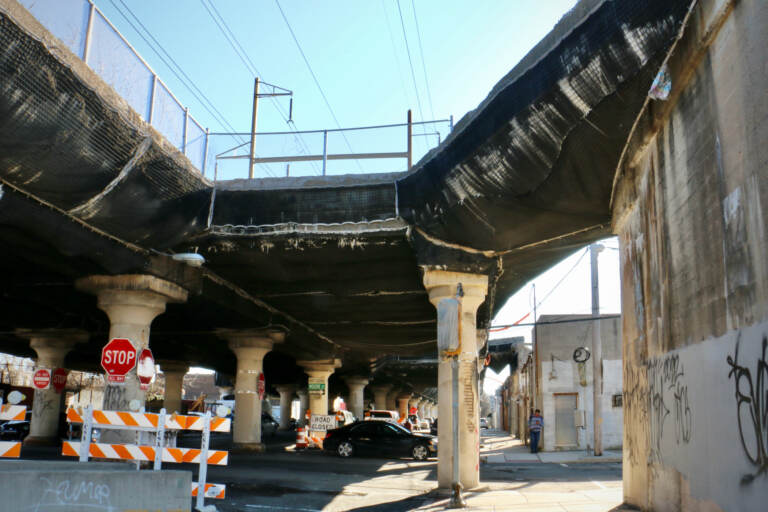
Extensions from the 25th Street Viaduct hang over sidewalks. Safety netting installed by CSX prevents the crumbling concrete from falling. (Emma Lee/WHYY)
It’s an eyesore. It’s disrupting traffic patterns. It’s attracting illegal dumping.
Close to seven years after the transportation company CSX promised to renovate the 25th Street Viaduct in South Philadelphia, the project still isn’t done. The city’s Law Department is weighing its options, but a member of City Council wants action sooner.
“I don’t believe we’re moving fast enough,” said Councilmember Kenyatta Johnson.
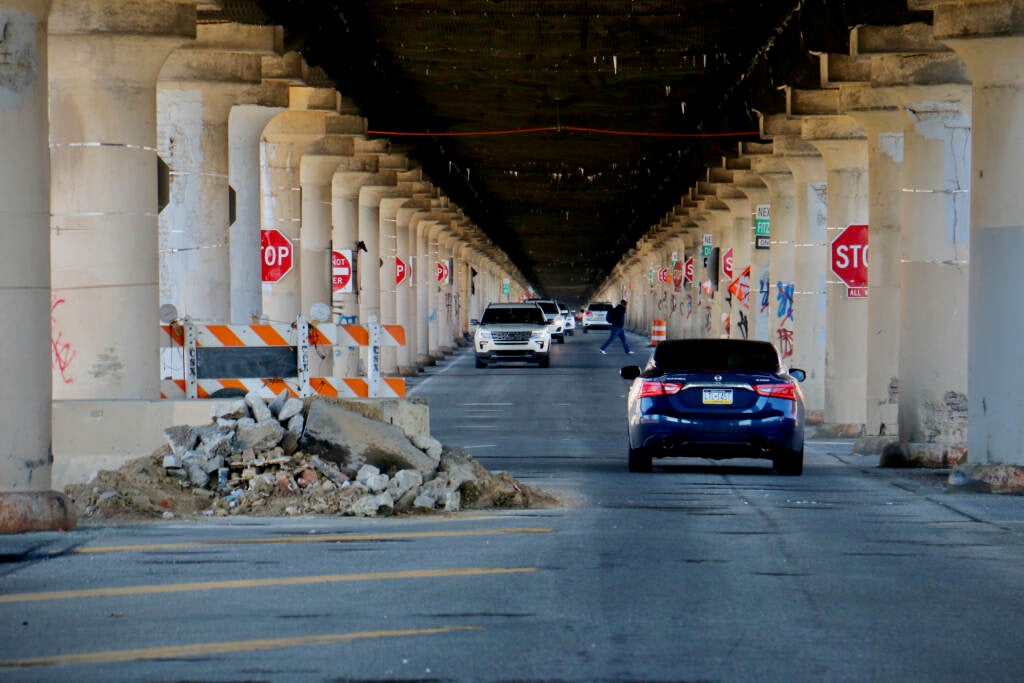
The 25th Street Viaduct, close to a century old, is a railroad bridge that carries freight trains directly above 25th Street in South Philly for over a mile. Vehicle drivers have long reported chunks of concrete falling off the underside of the bridge — a problem caused by issues with its drainage system. In 2015, CSX, which owns the bridge, announced it would restore it, by repairing the drainage system, replacing the parapet walls, and resurfacing the underside of the bridge – all within five years. But the company told city officials during their latest meeting that it would not move forward with the plans originally proposed to the city, according to Streets Department spokesperson Crystal Jacobs.
CSX has put in place a temporary solution that was the first step in the plan announced in 2015: safety netting beneath the viaduct to keep chunks of concrete from hitting cars and pedestrians. CSX emphasizes the safety of the bridge, and a spokesperson at the Federal Railroad Administration confirms the company’s inspections of the structure are current and in compliance with federal regulations.
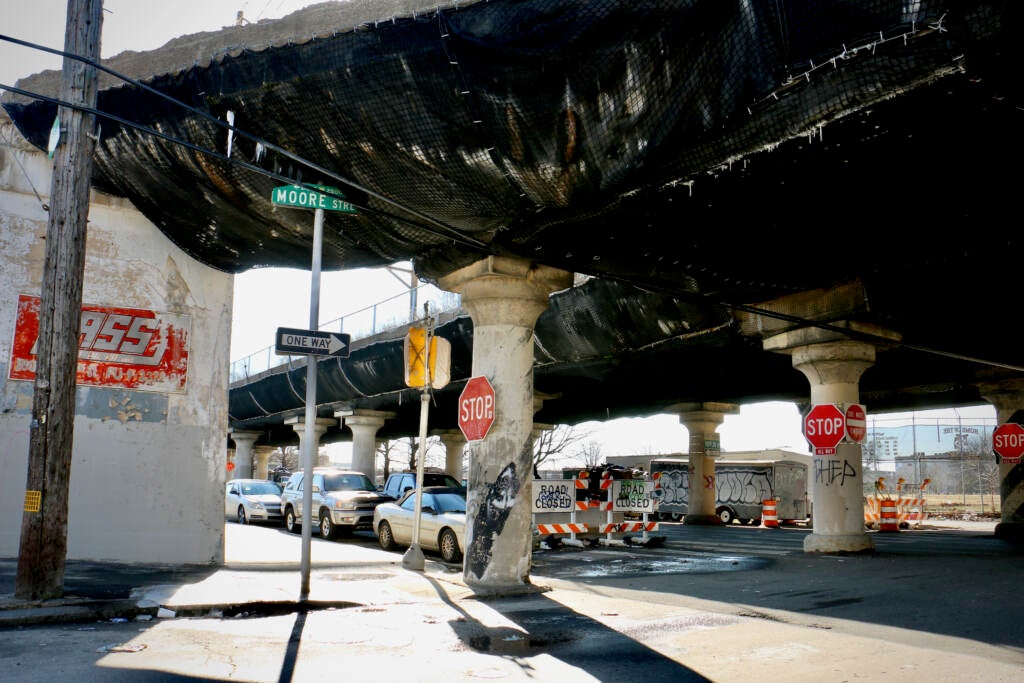
But the netting has caused its own problems, said Darin Gatti, then-chief engineer with the city’s Streets Department, in an interview earlier this month (Gatti has since retired). The netting forced the city to remove traffic lights, which Gatti said were the only way four lanes of cars could safely navigate intersections under the viaduct, given the limited sight lines caused by its thick pillars. So the city had to close the two outer lanes, reducing 25th street to one lane in each direction. Stop signs halt traffic at every block.
“The traffic signals are disconnected, with stop signs that could confuse somebody very easily,” said Salvatore Della Pia, who has lived near the viaduct for decades and drives under it to get to other parts of the city. “At some intersections, they have multiple stop signs that you can easily drive through and cause an accident.”
Cars now park in the outer lanes. Gatti said the unused space has attracted illegal dumping.
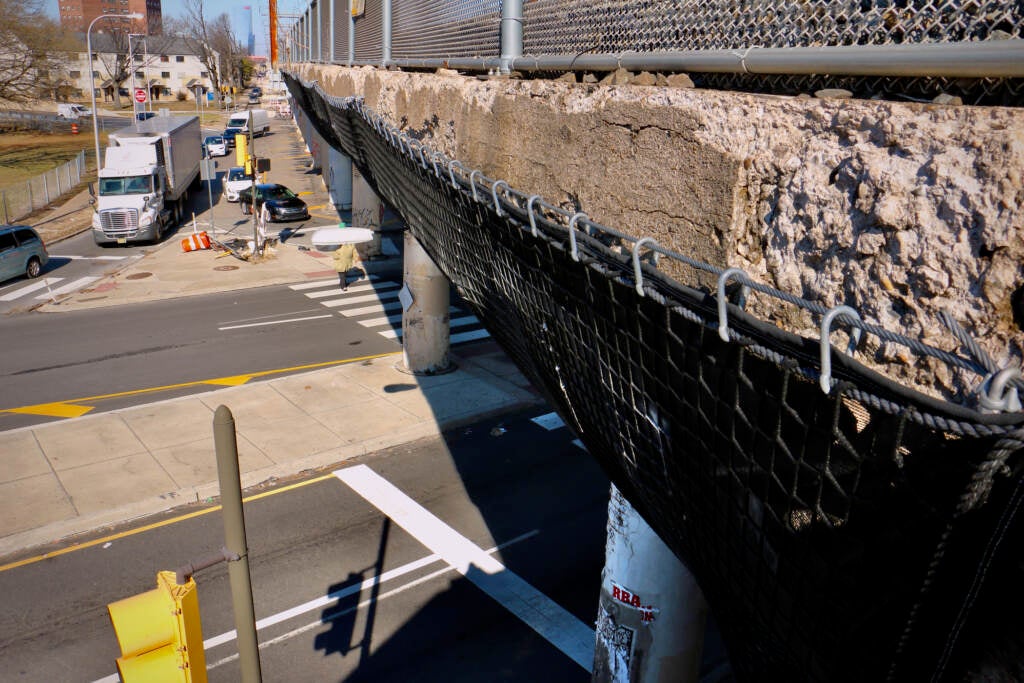
“These contractors, they’re illegally dumping their building materials. People throwing their garbage down there,” Della Pia agreed. “It’s not only an eyesore, it’s a health risk to people that live in the area.”
Besides repairing the viaduct so that the netting can be removed, the city wants CSX to get rid of the viaduct’s side “spurs” that extend over parts of the sidewalk. These once let train cars detach and make deliveries directly to businesses, but currently serve no purpose, Gatti said.
“It would be ideal if we could get those removed because that would get rid of a couple of columns — open up the space a little bit more,” he said. “It would be better for the neighborhood.”
It’s unclear what action, if any, the city will take to expedite the repairs. Nearly a year ago, the South Philly Review reported the project was stalled over a disagreement about which party —- the city or CSX — is responsible for the repair of underground sewer traps. At that point, Councilmember Johnson, whose district includes the viaduct, was already urging the city to explore all options for legal action.
“It is outrageous for CSX to renege on its public promise to the City of Philadelphia and its people,” Johnson wrote in a March 2021 letter to CSX’s CEO, provided by Johnson’s office to PlanPhilly.
In an interview Tuesday, Johnson said the city was preparing to file a complaint with the Pennsylvania Public Utility Commission, which has jurisdiction over public rail crossings and can assign financial responsibility for maintenance. City spokesperson Kevin Lessard did not deny the Law Department was preparing a complaint, but didn’t confirm it either.
“The City is currently reviewing its options with regards to the viaduct and is unable to comment further about any plans at this time,” he wrote in an email Wednesday.
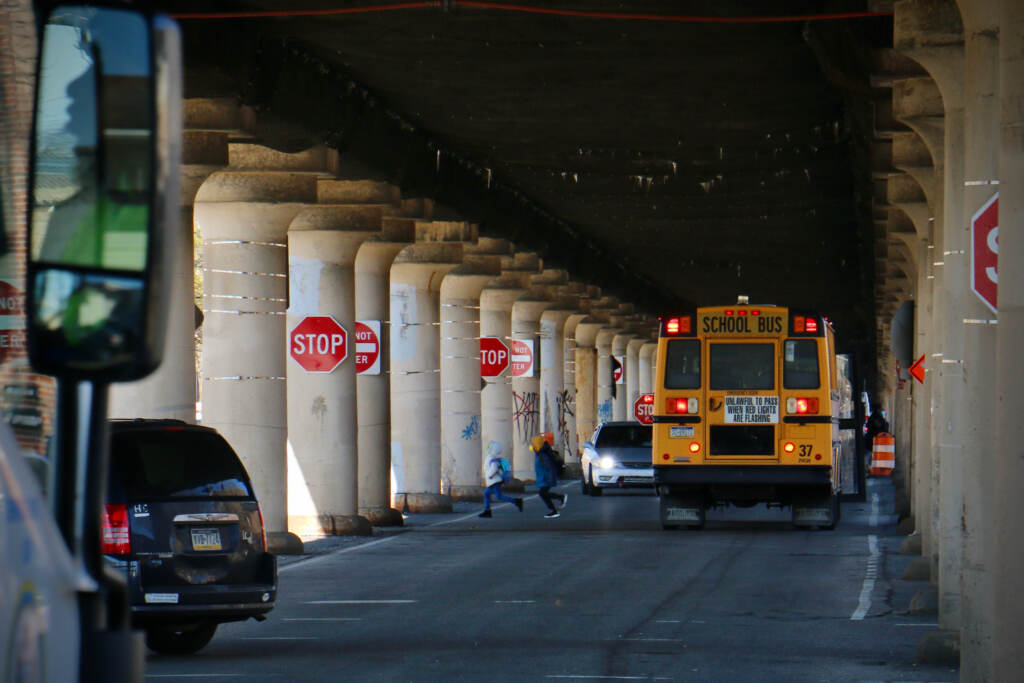
CSX declined to provide PlanPhilly with an interview, but spokesperson Sheriee Bowman said in an emailed statement that the company has completed “various phases” of the project — and plans to complete additional renovations on portions of the viaduct with a grant from PennDOT.
The $6 million grant, announced in December, covers both renovating a nearby five-span bridge that crosses Washington Avenue and removing inactive spur bridges along the 25th Street Viaduct that the city has complained about, according to PennDOT spokesperson Alexis Campbell. The grant agreement has yet to be finalized.
CSX’s Bowman did not address what has caused renovations to lag the company’s original timeline, but alluded to the disagreement with the city over maintenance responsibilities.
“We remain in ongoing discussions with the city about required repairs to the drainage system and their role in addressing this critical need,” Bowman wrote.
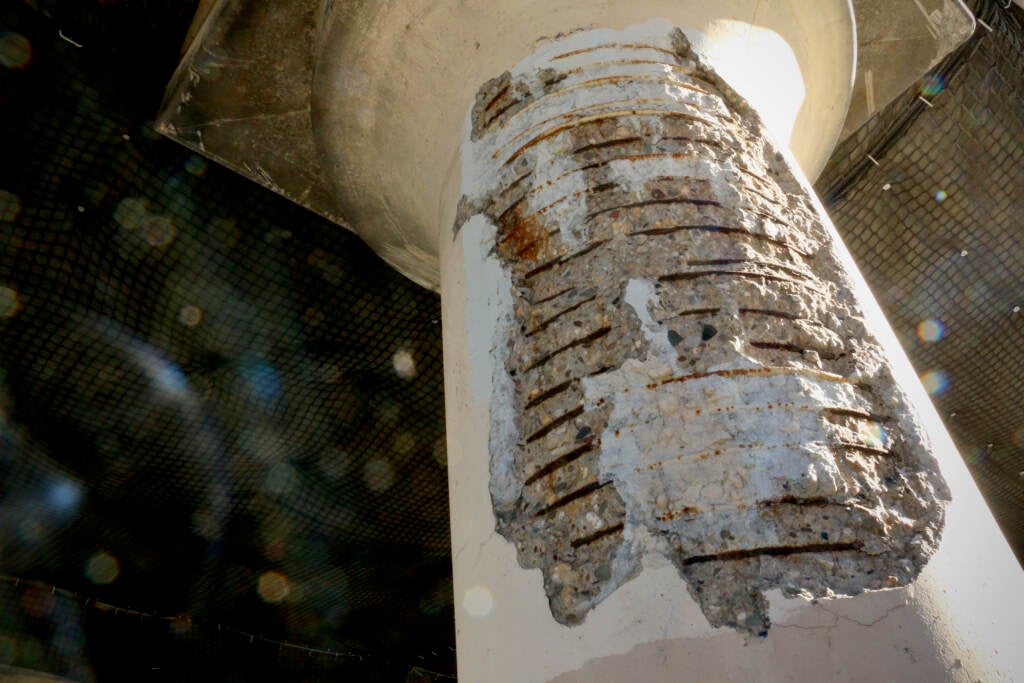
Part of the reason the city wants to see the viaduct renovation finished is because, for almost a year, the Philadelphia City Planning Commission has been undertaking a community engagement effort to consider improvements to the 25th street corridor. So far the commission has conducted a survey, which revealed most respondents avoid traveling along or across 25th Street “because of safety or other concerns,” and held two meetings with a steering committee including stakeholders in the Point Breeze and Grays Ferry neighborhoods.
The commission has not yet released recommendations for the area, but has presented possible options including lighting and sidewalk improvements, pedestrian islands, and lane reconfigurations that could create central bike lanes, bus lanes or a parking area.
Ultimately, Councilmember Johnson sees the delayed repairs to the viaduct as degrading quality of life in a predominantly African American community.
“It’s an issue that should be addressed and a matter of public safety, but most importantly, environmental justice.”
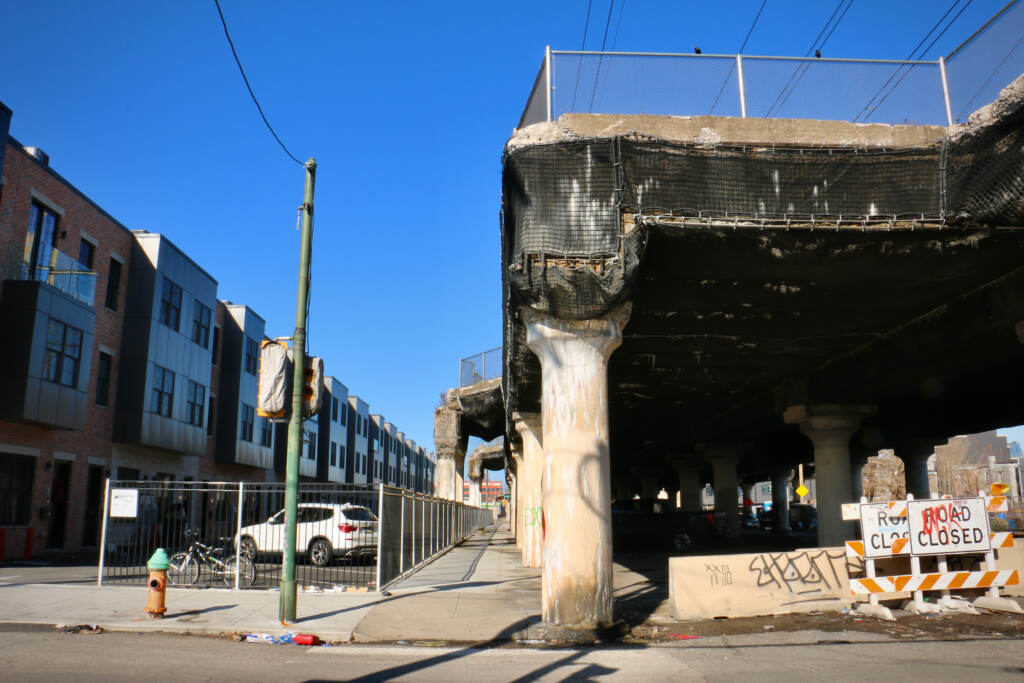

Subscribe to PlanPhilly
WHYY is your source for fact-based, in-depth journalism and information. As a nonprofit organization, we rely on financial support from readers like you. Please give today.




